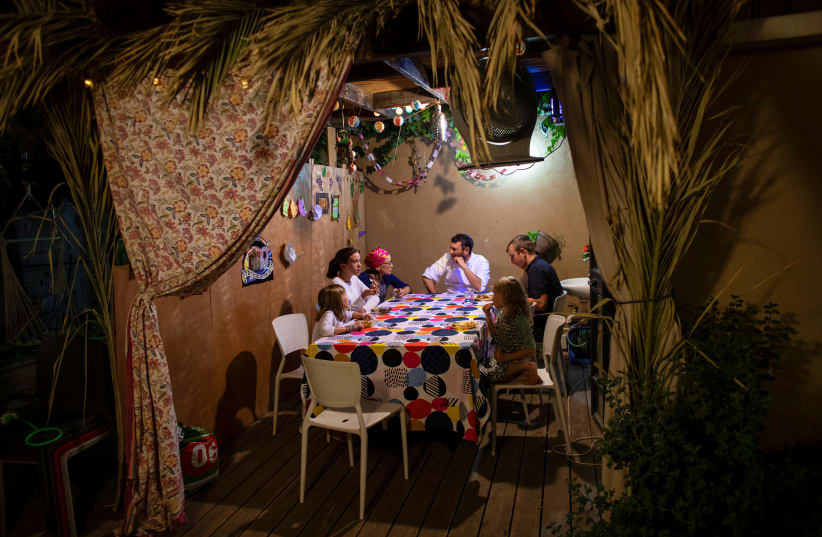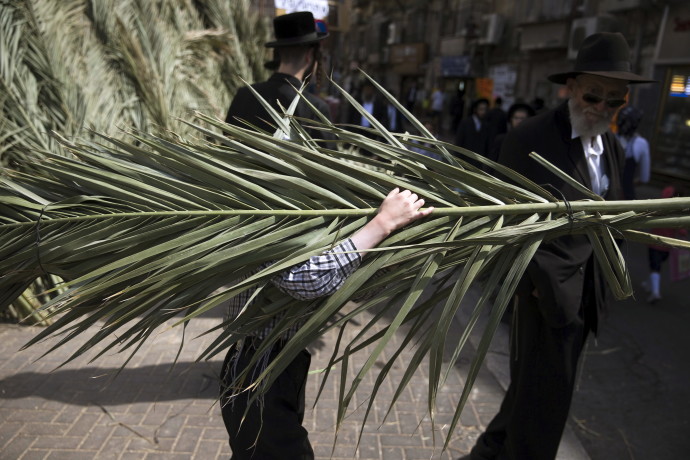I love the High Holy Days. Rosh Hashanah and Yom Kippur are my favorite times of the year. The tefilot, the special prayers, the piyyutim, the poetry, and the shofar make my soul soar and my heart sing. But, I have discovered, I am not the norm.
Many don’t admit it – but many people have a love/hate relationship with the High Holy Days. While there are some aspects of this solemn season that they really love, there are others that they, to put it bluntly, actually despise.
Navigating through the difficult parts takes a combination of skill, determination and planning. Being with family is, sometimes, too much of a good thing. Feasting on those special holiday foods is, always, way too much of a good thing.
Long synagogue services are de rigueur. And while they are uplifting, after a while, the high of the High Holy Days starts to turn dull. Here are a few tried-and-true suggestions to help navigate through the holidays.
I believe in advance preparation – and I’m not talking about prep time in the kitchen. I’m talking about prep time for synagogue services, done in the days, or even hours, preceding the onset of the holiday.
Pull down a few different machzorim, each with different translations and commentaries. Put them in a bag and take them with you when you leave for the synagogue.
Turn on your computer and check out YouTube. You’ll be amazed at how much High Holy Day music is available – and even more amazed at the range of music.
I select a piyyut and then find a few recordings. I start with traditional melodies and then go to more popular ones. I read the commentary. I end up humming and singing the tunes. Sometimes it’s Leonard Cohen. His “Hallelujah” and “Who by Fire,” which is his rendition of the u’netaneh tokef prayer, are always powerful, especially at this time of year.
I’ve already listened to Barbra Streisand belt out “Avenu Malkeinu” for President Bill Clinton and prime minister Shimon Peres, and I compared her rendition to Shulem Lemmer’s rendition.
Ochila is my personal, all-time, favorite High Holy Day prayer. The combination of solemnity required to truly speak those words, asking the Almighty to make us worthy of offering him praise and the melodies to which it is sung send chills down my spine. I love the traditional, old-time, traditional nusach, (melody) and I love the modern melody composed by Rabbi Hillel Paley.
These songs and tefilot literally get embedded in my head. In my downtime, I find myself humming tunes and melodies from the liturgy. It really sets the mood.
DURING THE month of Elul, we specifically blow the shofar to prepare ourselves for the holiness of the upcoming days. I’m fortunate in that I can blow my own shofar (pun intended). Hearing that “tekiya” blast through the air and reverberate in space serves several purposes.
Maimonides refers to the shofar as a type of alarm clock. Obviously, that’s my term, not his, since he died in 1204 and there were no alarm clocks then. This medieval Jewish philosopher refers to the sounds of the shofar as a call to wake up and repent, to take stock and self-evaluate.
Preparing for longer services
The services can be arduous for even the most seasoned parishioners. Congregants tend to evaluate the services more by how long they took rather than how inspirational they were. Longer is never better.
And I would bet that the most often asked question at tashlich, when we gather in the afternoon of the first day of Rosh Hashanah to toss, symbolically, our sins to the sea, is not “how big was your pekel (basket) of sins?” – but instead, “what time did your services end?”
That bag of machzorim is the best way to pass the time and supplement the service. Good translations with good explanations and footnotes are very helpful.
Bringing printouts of commentaries and essays that deal with the Torah reading and haftarah readings are very useful. Essays about the High Holy Days can break the monotony and allow you to reach a deeper understanding of the holidays and the service.
Sorry, I am not a psychologist. I cannot help you with your family. For that, you’re on your own.
But I am an expert eater. I look at the meals of the holiday as a marathon. And as in any marathon, the goal is to pace yourself.
Two days, two large meals each day. As a dear friend’s mother once described Rosh Hashanah to her non-Jewish colleagues, it’s like preparing and eating two Thanksgiving meals a day for two days – and eating them with all your family.
I love eating the simanim, what some families refer to as the “yehi ratzons,” the special foods we eat that pun on our hopes for the new year.
Like eating carrots, which are called gezer in Hebrew and asking that all the bad judicial decrees against us, the gezerot kashot be canceled. And in Yiddish, carrots are called merin and some canny grandparents ask – with a wink and a smile – that there be “merin”/more family members joining their table next year.
Of late, the best part of the High Holy Days is that we can celebrate with family. That we can attend services, no matter how long they take or how the cantor’s chosen melodies grate on your nerves.
That we have transitioned out of COVID and we can allow the transformative message of Rosh Hashanah to wash over us, seep into our souls and serenade our hearts. And, God willing, to be granted a year of blessings, of good health, good news and prosperity. And that we can join together with the people we love once again, next year.Shana Tova to all.
The writer is a columnist and a social and political commentator. Watch his TV show Thinking Out Loud on JBS.

